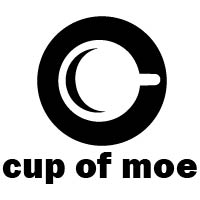We may earn money or products from the companies mentioned in this post.
If you’ve hit the gym recently, or participated in an event such as a 5k or marathon, you’ve probably noticed a proliferation of bracelets, armbands, and other internet connected devices. These wearables, as they are known, erupted into popularity, quickly gaining mass adoption from fitness freaks and casual exercisers alike. Like gym-goers, such gadgets vary from budget devices to high-tech tools.
Similarly, uses range from music-oriented appliances to training equipment. While many wearables offer useful data, like heart rate, distance, etc., there’s a new breed of training tech. This emerging category includes tools that can more accurately record information to provide understanding of our workouts. Traditional wearables estimate intensity, but several factors can alter results, like hydration level and general fatigue. This more precise technology offers a superior snapshot of what’s happening while we’re running.
Rather than traditional measurements, this innovative genre of wearables makes it feasible to track metrics such as power and gait. Blood lactate tests are among the most precise methods for quantifying intensity during a workout. However, it’s a pricey procedure, and requires regular finger pricks throughout the entire process. Enter BSX, and their Insight.
BSX Athletics has a miniature device, the Insight, that can read blood lactate, while foregoing the costly, and invasive, traditional blood lactate test. Normal tests involve regular finger pricks, and run for about $150. BSX’s Insight shines light through users’ skin, and identifies changes in blood oxygenation levels. The tiny device is fastened to the runner’s leg using a compression sleeve, sending data to compatible devices.
Running transcends mere intensity. Hitting the road or treadmill for several miles with poor form is counter-productive. Another breakthrough, the Sensoria smart sock, provides statistics about stride, allowing runners to see a snapshot of their mechanics. This lets users identify whether they are a toe, mid-foot, or heel striker. It’s a neat idea, but fitness specialists even can’t come to a consensus on which gait is most appropriate. Although heel strikers are notorious in the running community, there are compelling arguments against switching up form, which can lead to complications. Plus, even seasoned toe and mid-foot runners have a tendency to revert to heel striking under certain circumstances, like fatigue during a long run.
I won’t lie, I’ve often been skeptical of wearables in the past. Too often at the gym there’s some dude hogging a treadmill, and rather than running they’re fiddling with a smartwatch or other fitness tech. Then there’s the guy having a loud phone conversation in the weight room, meanwhile surrounded by half the dumbells in the gym. Additionally, I’m a proponent of organic workouts. Sure, I’ll grab onto the heart rate sensors built into the treadmill handlebars occasionally, but it’s fairly simple to gauge your intensity level. The only “wearable” I own is a Sansa Clip Zip, an internetless dedicated mp3 player. Before you scoff at my budget Sansa Clip, you should know if plays FLAC. I don’t travel without my collection of vinyl rips.
The Insight and Sensoria’s sock offer ample, well, insight, into workout intensity, and more accurately than standard training tech. According to studies, the Insight was found to be over 95 percent accurate when compared to standard blood lactate tests. BSX’s gadget is a portable version of a blood lactate test, but at a $300 price tag. Sure, this is an improvement over shelling $150 for one blood lactate test, but it’s not cheap. With the Sensoria, knowing your general running style is great, but what to do with this information isn’t clear.
As revolutionary as BSX and Sensoria have been, such wearables likely won’t see mass adoption among casual users, or even hardcore runners. Don’t expect to see me rocking a special sock or Insight at the gym any time soon, but I’m a bit of a cheapo. While I’ve definitely got fitness goals, I’m not quite compelled to shell out a few hundred to gauge what I can estimate with distance, heart rate, speed, and time. Come find me when I can cop these devices in the $15-$20 range. There are variables, such as distance, time, and heart rate that can offer a decent portrait into how hard we’re actually exercising. Still, Sensoria and BSX have made huge strides on the fitness wearable front, and once devices like the Insight drop in price, they’ll become the industry standard.
This post may contain affiliate links. We are a participant in affiliate programs such as the Amazon Services LLC Associates Program, an affiliate advertising program designed to provide a means for us to earn fees by linking to Amazon.com and affiliated sites. However, all products are thoroughly tested and reviews are honest and unbiased.

